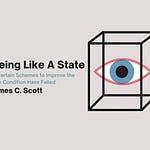Detailed Briefing Document: Analysis of Chainless Slaves by U.W. Ozian
This briefing document provides a detailed review of the main themes and most important ideas presented in the excerpts from "ChainlessSlaves.pdf." The document outlines the alleged processes, techniques, and goals associated with the systematic programming and control of individuals through methods including hypnosis, trauma, drugs, and the creation of dissociated identities (alters).
Main Themes:
Systematic Subject Selection and Initial Hypnosis: The document details a process for selecting individuals with no close social ties who are then subjected to "Level One hypnosis." This initial stage aims to assess their usefulness and determine their programming potential based on IQ, measured using the Stanford Binet scale. Higher IQ individuals are deemed capable of more extensive programming and are placed in a "call file."
"Adult subjects are selected who have no close family or friends. Once they have been selected, they are put under Level One hypnosis. At this time a clear and definitive pattern of their usefulness is determined by psychiatrists and programmers."
Advanced Hypnotic Programming and Mind Control: The text extensively discusses the use of hypnosis as a core tool for programming. It highlights techniques such as determining the "Posthypnotic Suggestibility Index," applying "Hypnoamnesia," and implanting a wide range of suggestions related to emotions, behaviors, and physical states. The document claims programmers understand and manipulate the mind's natural functioning, including "K-lines" (linked mental processes), to insert new patterns and control cognitive processes.
"Hypnosis is used to steer a subject’s mind in the direction that has been dictated for them. New patterns of thought, feelings and behaviour are inserted to build confidence in the goals of the Programmers’."
"During programming the untrained K_lines are brought up to the top of the conscious mind. The programmer now has access and control over many or all the cognitive processes, including many the subjects would not normally activate."
Dissociation and the Creation of Alters: A key element of the described programming involves inducing dissociation through hypnosis and trauma, leading to the creation of multiple "alters" or fragmented identities within a single individual. Programmers allegedly structure these "systems" with specific functions and controls, utilizing techniques like "No-talk walls" and varying levels of trance for different parts.
"Each section is walled off from another section by amnesia. Each trauma has an amnesia wall built around it. Each trauma memory is sectioned off."
Trigger Mechanisms and Control: The document emphasizes the use of triggers – hypnotic cues tied to everyday objects, music, tones, etc. – to activate specific programming and bring forward particular alters. These triggers are designed to maintain control and prevent programming breakdowns. Prescheduled and event-triggered subconscious implant delivery are also described as methods for influencing thoughts and feelings at specific times or in response to specific stimuli.
"Hypnotic cues that are tied to everyday objects enhance the programming. These triggers will consistently up hold programming throughout the subject’s day to day tasks."
Brainwave Manipulation: The text details the alleged use of hypnosis and other techniques to manipulate brainwave frequencies (Beta, Alpha, Theta, Delta, Gamma, Epsilon, Lambda, Sigma) to induce different states of consciousness conducive to programming. Binaural beats and Extremely Low Frequency (ELF) waves are mentioned as potential tools for this manipulation.
"The voice of the programmer is used in specialized hypnotic deepening, inductions and confusion techniques is able to artificially induce lowered brain wave frequency into the Alpha, Theta and Delta states."
Sleep Deprivation and Trauma: REM sleep deprivation is described as a method to impair cognitive functions and enhance suggestibility. The document also outlines the use of "Shame Factor Enhancement" through posthypnotic suggestions designed to induce embarrassing acts, providing leverage for control. Sensory deprivation and extreme torture methods are detailed as crucial for installing deep-level programming and creating alters.
"REM deprivation inhibits short-term memory, concentration, tactile abilities, verbal articulation, reasoning, and self will."
"Torture involving states of extreme pain and terror, to the point of near-death, is required to install programming."
Internal System Architecture and Programming Codes: The document describes complex internal structures within programmed individuals, often visualized as castles, computer systems, or geometric patterns (cubes, spheres, pyramids, 13x13 grids, Double Helix, Beehive, Solar System, etc.). Specific "parts" or alters within these systems are assigned codes (alphanumeric, color-coded, body gestures, taps) for identification, activation, and control. Cult/occult and intelligence organizations are said to employ different coding preferences.
"A typical system will constructed as a cube, sphere or pyramids. The principle parts will be the "A" parts. A typical section of parts will consist of a 13 x 13 grid of parts."
"The codes used from subject to subject follow patterns. There are standard and exclusive codes. Master programmers will lay in the foundation programs and codes and developed the scripts."
Goals of Programming: The document lists various alleged goals of this programming, ranging from controlling an individual's future actions and preventing information leaks to inducing specific behaviors (including hostile acts) and altering personality. Research into materials and methods to facilitate hypnosis, induce amnesia, and enhance manipulation is also mentioned.
"Obtain control of the future activities (physical and mental) of any given individual, willing or unwilling by application of SI (sleep induction) and H (hypnosis) techniques."
"Create by post-H control an action contrary to an individual's basic moral principles."
Scripting and Movie Integration: The use of "scripts" with identifiers, triggers, content, and duration is described as a key programming technique. The integration of movies is also detailed, where subjects are traumatized and have alters created based on characters, with concealed meanings and music from the movie used as triggers.
"The script will generally consist of four separate parts; (1) an identifier... (2) trigger activation condition... (3) the content... (4) and a duration..."
"The programmer will play the movie for the subject. The subject is told that they will be questioned about the movie; this cues the subject to use photographic recall about what they are viewing."
Drug Facilitated Programming: The document outlines the alleged use of various drugs to enhance hypnosis, create illusions, control pain, manipulate emotions, and assist in creating and maintaining alters. Specific effects and cautions related to drug administration are mentioned.
"The distortions induced by the drugs are used to the programmers benefit."
"Helping create illusions such as no hands, no feet, no face, no head etc. A programmer working with a hallucinogenic drug can make an alter believe that it has lost a particular body part."
Brain Frequencies and Their Applications: A comprehensive list of brainwave frequencies and their purported associations with mental states, healing, natural phenomena, and potential applications in mind control is provided. This section suggests a belief in the ability to influence physical and mental states through specific frequencies.
"Every part of a subject’s body vibrates to its own rhythm. The brain has a unique set of brain waves. There are five distinct brain wave frequencies; Beta, Alpha, Theta, Delta and Gamma."
Ambiguous Words and Double Meanings: A list of words with contradictory meanings is included, suggesting their potential use in programming to create confusion or hidden commands.
"Aught: All, or nothing... Bound: Heading to a destination, or restrained from movement..."
Types of Alters and Their Functions: A detailed taxonomy of alleged alter types is presented, categorized by function (e.g., Damper Parts, Data Parts, Death Parts, Denial Parts) and color coding (e.g., CLEAR, GOLD, SILVER, PURPLE), with descriptions of their roles within the internal system.
"Parts, alters, insiders are names used for the created fragments of the programmed individual. Names and functions of parts vary from system to system."
"CLEAR. Secret or shell alters who can take on any colour are coded clear. These are alters who serve as images or as a stage for other alters."
Specific Programming Themes: The document describes various specific programming themes, often named after concepts or entities (e.g., Alex implants, Atlantis system, Beehive System, Castle system, Delta System, Disney Programming, Dog Programming, Gamma programming, God Satan Programming, Hourglass programming). These themes appear to represent distinct structures or sets of programming within a subject's internal system.
"Alex implants are used within subjects to communicate such thoughts as: a. "murder your family" b. "the government is to blame, murder the President"..."
"The Castle system involves internal imagery of a castle. A castle system will contain a moat, drawbridge, turrets, gargoyles, a torture dungeon filled with actual memories of torture, secret passages, lots of levels, and rooms including a library."
"Dog programming is for sexualized aggression. The subject is aggressively raped from behind. The perpetrator of the rape will say things such as: ‘good bitch’, ‘fucking dog’, ‘you’re in heat’, and will often growl or bark themselves."
Glossary of Terms: A glossary provides definitions for terms allegedly used in the context of mind control, programming, and related concepts (e.g., Debriefing, Deep Cover Agent, Hypnoamnesia, Monarch Programming, Trigger).
"Hypnoamnesia- Temporary loss of memory due to a posthypnotic suggestion."
"Monarch Programming--A project carried out by secret elements of the U.S. government and intelligence groups a type of trauma-based mind-control."
Important Ideas and Facts:
The document posits a highly organized and systematic approach to mind control involving multiple stages and techniques.
Hypnosis is presented as a fundamental tool, capable of profound influence over thoughts, emotions, and behaviors.
Trauma and dissociation are described as key mechanisms for creating fragmented identities (alters) within a subject.
Complex internal "systems" with specific architectures and control mechanisms are allegedly constructed within programmed individuals.
Triggers (both internal and external) are used to activate programming and control alters.
Brainwave manipulation, drugs, and sleep deprivation are described as methods to enhance suggestibility and facilitate programming.
Programming is alleged to have diverse goals, including espionage, assassination, information control, and manipulation of beliefs and behaviors.
Specific programming themes and codes are reportedly used by different organizations (e.g., cults, intelligence agencies).
Conclusion:
The excerpts from "ChainlessSlaves.pdf" describe a disturbing and intricate alleged system of mind control and programming. The document details methods of subject selection, hypnotic techniques, trauma-based dissociation, the creation and control of alters, the use of triggers and codes, and various tools like drugs and brainwave manipulation. The alleged goals of this programming are wide-ranging and point towards the creation of controllable individuals for various purposes. The inclusion of specific programming themes, alter types, and a glossary of terms suggests a complex and potentially established framework, according to the document's claims. It is important to note that these are claims presented within the source material.
Frequently Asked Questions
What criteria are used to select individuals for this programming?
Adult subjects are chosen specifically because they lack close family or friends, making them more isolated and potentially easier to control.
How is hypnosis employed in the programming process?
Hypnosis is a fundamental tool used to access and manipulate the subject's mind. It is utilized to determine their suggestibility, induce amnesia, and implant new patterns of thought, feelings, and behavior. Programmers aim to lower brainwave frequencies into Alpha, Theta, and Delta states to enhance suggestibility and learning. Hypnotic suggestions are anchored to various stimuli, and fear can also be used to induce a dissociative state conducive to hypnosis. This allows programmers to alter "K-lines" (mental process links) and establish new ones, effectively rewriting aspects of the subject's cognitive processes and perceptions.
How are memories and programming protected from discovery?
Levels of programming (3, 4, and 5) are stored in locations within the brain and memory that are difficult for typical psychologists or psychiatrists to access without specific activation codes or accidental discovery. Even if past hypnosis and the original personality are found, the deeper programming remains hidden. Programmed subjects who commit hostile acts will also have amnesia regarding those events, preventing them from divulging information even under torture. Furthermore, a "conviction of innocence" is instilled, causing subjects to respond honestly even if they have committed wrongdoing.
What are some examples of programming that can be implanted?
The text details a wide array of implanted programs, including those affecting sleep patterns, inducing panic or phobias, managing health and pain, increasing motivation, and even suicide programs ("hypno-sleep") and insanity programs. Subconscious implants can be prescheduled or event-triggered, leading to seemingly random thoughts and feelings or reinforcing desired behaviors. Visual and auditory hallucinations can be implanted, as well as "noun substitution" to create the perception of an external voice directing the subject.
How are brain frequencies utilized in programming?
Different brainwave frequencies (Beta, Alpha, Theta, Delta, Gamma, and Epsilon) correspond to various states of consciousness, and programmers manipulate these states using hypnosis and potentially ELF waves. Lower frequencies like Theta and Delta are associated with deep relaxation, subconscious access, and learning, making them ideal for implanting programming. Gamma waves are linked to high focus and neuroplasticity, while Beta is associated with normal waking consciousness. Programmers may also attempt to induce astral projection by jolting the mind awake with Beta signals while the body is asleep, aiming to access altered states of consciousness. Binaural beats can also be used to create specific brainwave frequencies.
How is the subject's internal world structured and controlled?
Programmed individuals often have complex internal systems with fragmented personalities referred to as parts or alters. These systems can be structured using various models like castles, solar systems, or geometric grids (e.g., 13x13 grids). These structures contain different sections and levels, often walled off by amnesia and "no-talk walls" to prevent communication between parts. Internal "computers" and "programmers" (internalized alters) maintain and control the system, with programming often tied to visual or spatial representations within these internal landscapes. Control is also exerted through codes, triggers, and regular hypnotic reinforcement.
What role do codes, triggers, and rituals play in maintaining control?
Specific access codes are used to enter a subject's internal system without triggering defenses. Handlers employ codes and triggers (including words, objects, touch, and body gestures) to activate specific programming or bring forward particular alters. These triggers can be linked to everyday objects to ensure consistent reinforcement. Cult and occult programming often utilize specific languages (e.g., Hebrew, Latin, Enochian, Futhark) and codes derived from religious texts or demonic names. Rituals, particularly in cult/occult programming, are deeply integrated into the creation and maintenance of alters and programming. Color coding is also frequently used to identify different types of alters and access internal locations.
What methods of trauma and abuse are used to install and reinforce programming?
The text describes extensive use of torture involving extreme pain and terror to create dissociation necessary for programming. Methods include electroshock, painful toxins, physical and sexual assault, extremes of temperature, suffocation, near-drowning, sensory deprivation, and sleep deprivation. Psychological manipulation, such as forcing subjects to harm others and instilling feelings of despair and self-hatred, is also employed. These experiences are often woven into the programming itself, so that violating programmed commands can trigger a re-experiencing of the original trauma, complete with somatic manifestations. Drugs are also used in conjunction with programming to enhance suggestibility, create hallucinations, manage pain, and reinforce desired behaviors.
Additional Questions
Briefly define trauma-based programming and its primary objective.
Trauma-based programming can be briefly defined as systematic and calculated torture that blocks the subject’s capacity for conscious processing. This method uses suggestion, hypnosis, and/or classical and operant conditioning to implant thoughts, directives, and perceptions in the unconscious mind. The primary objective of trauma-based programming is for the subject to follow directives with no conscious awareness, including performing acts that violate their moral principles.
How do trauma-based programming and dissociation interact to create and control internal mental systems?
Trauma-based programming and dissociation are fundamentally intertwined in the creation and control of internal mental systems, according to the source "ChainlessSlaves.pdf".
Trauma-based programming is defined as systematic and calculated torture that blocks the subject’s capacity for conscious processing. This method employs suggestion, hypnosis, and/or classical and operant conditioning to implant thoughts, directives, and perceptions in the unconscious mind. The intended outcome is for the subject to follow directives without conscious awareness, even if those directives violate their moral principles.
Dissociation is described as a natural ability of the brain used as a defence to protect a subject from overwhelming pain and trauma. It is a major requirement for the installation of trauma programming. Individuals with a genetic predisposition for dissociation, especially those from families with multiple generations of abuse, are considered prime candidates for programming.
The interaction between trauma and dissociation is central to creating internal mental systems:
Trauma induces dissociation: Programmers cause intense trauma through methods like electroshock, torture, abuse, and mind games to force individuals to dissociate from reality. The overwhelming pain and trauma trigger the brain's natural dissociative response.
Dissociation enables the creation of walled-off identities (parts/alters): Mental dissociation allows programmers to create walled-off parts in the subject’s psyche. These dissociated identities, also referred to as parts, alters, or insiders, serve as containers to hold and hide programming. The subject's capacity to dissociate, pain threshold, and imagination permit the creation of these new personalities.
Programming is implanted in dissociated identities: The behaviors, thoughts, feelings, and perceptions desired by the programmer are implanted within these trauma-induced dissociated identities. These parts are then programmed to force the subject to act in specific ways for the programmer's purposes.
Control is achieved through triggers linked to dissociated parts: Once programming is installed within these parts, the programmer can control the subject's behavior by triggering these specific alters. Common features of control in subjects include symbols, colours, and scripts. Various triggering techniques are used, such as real-time subconscious implant delivery, prescheduled subconscious implant delivery, and event-triggered implant delivery. These triggers can elicit desired actions or feelings.
Hypnosis enhances programming within dissociative states: A proper fear foundation created through trauma will place the subject in a dissociative state that makes hypnosis simple. During hypnosis, the mind is more willing to accept control statements from the programmer, allowing for the manipulation of thought patterns, feelings, and behaviors within the dissociated parts.
Sensory deprivation can deepen dissociation for programming: Sensory deprivation is used in conjunction with mind-altering drugs to further dissociate the subject and implant specific programming, such as alien programming and suicide programming.
Scripts are layered into dissociated parts: Programming suggestions are layered into the dissociated parts using torture and psychotropic medication, making them almost impossible for the subject to consciously challenge.
In essence, trauma acts as the catalyst that forces the mind to dissociate, creating separate mental compartments. Programmers then exploit this dissociative capacity to build and program distinct identities within these compartments, using techniques like hypnosis, suggestion, and conditioning. Control over the subject is achieved by triggering these programmed parts, which operate outside the subject's conscious awareness. The creation of these internal mental systems, with their own functions and programming, allows for complex and covert control over the individual.
How does programming leverage a subject's dissociative capacity?
Programming fundamentally relies on and leverages a subject's dissociative capacity. According to the source "ChainlessSlaves.pdf", dissociation is a natural ability of the brain used as a defense against overwhelming pain and trauma. Programmers exploit this innate mechanism to create and control internal mental systems.
Here's a breakdown of how programming leverages a subject's dissociative capacity:
Trauma Induces Dissociation: Programmers deliberately inflict intense trauma through various methods such as electroshock, torture, abuse, and mind games. This severe trauma overwhelms the subject's conscious processing abilities, forcing their mind to dissociate from reality as a protective mechanism. A proper fear foundation created through trauma will readily place the subject in a dissociative state.
Dissociation Enables the Creation of Walled-Off Identities (Parts/Alters): The act of mental dissociation allows programmers to create walled-off parts or alters within the subject's psyche. These dissociated identities serve as containers to hold and hide programming. The subject's capacity to dissociate, pain threshold, and imagination are crucial elements that permit the creation of these new personalities. Individuals with a genetic predisposition for dissociation, particularly those from families with multiple generations of abuse, are considered prime candidates for programming because of their readily available dissociative abilities.
Programming is Implanted in Dissociated Identities: Once these dissociated parts are formed, programmers implant specific behaviors, thoughts, feelings, and perceptions within them. This is achieved through techniques like suggestion, hypnosis, and/or classical and operant conditioning. These programmed parts are then designed to force the subject to act in specific ways according to the programmer's directives.
Control is Achieved by Triggering Dissociated Parts: The programming within these dissociated identities is linked to specific triggers, such as symbols, colors, and scripts. Programmers can then control the subject's behavior by triggering these specific alters. Various triggering techniques are employed, including real-time subconscious implant delivery, prescheduled subconscious implant delivery, and event-triggered implant delivery.
Hypnosis is Facilitated by Dissociation: Hypnosis, a key tool in trauma-based programming, is significantly more effective when a subject is in a dissociative state. A proper fear foundation induces dissociation, making hypnosis simple. During hypnosis, the mind is more receptive to control statements from the programmer, allowing for the insertion of new patterns of thought, feelings, and behavior within the dissociated parts. Hypnosis itself is described as a form of dissociation.
Deepening Dissociation for Programming: Techniques like sensory deprivation are used in conjunction with mind-altering drugs to further deepen the subject's dissociative state. This enhanced dissociation facilitates the implantation of specific programming, such as alien programming and suicide programming.
Anchoring Programming to Dissociated States: Much of trauma-based programming involves setting anchors into parts. These anchors, linked to traumatic experiences, are more effectively established and triggered within dissociated states.
In summary, the programmer exploits the brain's natural ability to dissociate under extreme duress to create a fragmented psyche. These dissociated fragments, or alters, become the isolated compartments where programming is installed and controlled. The deeper the dissociative capacity of the subject, the more easily these internal mental systems can be created and manipulated for the programmer's objectives.
What techniques utilize the subject's suggestibility?
Several techniques discussed in "ChainlessSlaves.pdf" directly utilize a subject's suggestibility to achieve programming goals. These techniques often aim to increase the subject's receptiveness to the programmer's suggestions and commands.
Here are some key techniques that leverage a subject's suggestibility:
Hypnosis: Hypnosis is explicitly stated as a powerful tool for programming that relies heavily on the subject's suggestibility. During hypnosis, the mind is more willing to accept control statements from the programmer. Techniques within hypnosis that enhance suggestibility include:
Determining the Posthypnotic Suggestibility Index: Programmers assess how easily a subject can be influenced by posthypnotic suggestions through a series of simple tests.
Hypnoamnesia: Inducing amnesia for specific information or events increases reliance on the programmer's suggestions.
Inducing Trance States: Taking the subject into different levels of consciousness (Alpha, Theta, Delta brainwave states) through specialized hypnotic deepening, inductions, and confusion techniques enhances their ability to quickly learn and accept suggestions. The hypnotic trance is described as a state where the human mind is at the pinnacle of its ability to quickly learn.
Anchoring Suggestions: Hypnosis is used to anchor suggestions related to various aspects like sleep patterns, panic programs, phobias, health, pain control, motivation, and suicide. Anchors in NLP are also linked to elicited emotional states to influence behavior.
Repetitive Music: Playing repetitive music with a beat close to the human heart (45 to 72 beats per minute) during programming sessions is noted to help in relaxation and anchoring, thereby potentially increasing suggestibility.
Body Language and Voice Roll: Programmers use their own body language and a specific voice roll (delivering words at a rate of 45 to 60 beats a minute) to subtly suggest thoughts or feelings, tapping into the subject's suggestibility.
Engaging Imagination: Programmers empower suggestions by engaging the subject's five senses and guiding them through imagined scenarios, allowing the subject to fill in details with their own imagination, which can solidify the suggestions.
Muscular Rigidity and Deep Breathing: These physical techniques are mentioned as ways to increase suggestibility within the subject.
Neuro-linguistic programming (NLP): NLP is described as an evolution of hypnotherapy that subtly layers meaning into language to implant suggestions into the unconscious mind without the subject's conscious awareness. Techniques include:
Building Rapport: By mirroring the subject's body language and linguistic patterns, the programmer fakes social cues that cause the subject to drop their guard and enter a state of openness and suggestibility.
Eliciting and Anchoring Emotional States: Programmers use language to elicit desired emotional states and then anchor these states to physical cues, allowing for the triggering of specific emotions and associated behaviors through these anchors.
Use of Drugs: Certain psychotropic medications are used to place people into a trance very quickly, enhancing their suggestibility. Stimulants can also increase the subject's index of suggestibility, making posthypnotic commands more effective and harder to resist.
Creating a "Proper Fear Foundation": The manual states that a proper fear foundation created through trauma will place the subject in a dissociative state that would make hypnosis simple. Dissociation itself increases suggestibility as the conscious mind is less engaged.
REM Deprivation: Prolonged REM sleep deprivation can lead to increased suggestibility, among other negative effects.
Subliminal Perception: While the goal of subliminal perception is to keep the subject unaware of the source of stimulation rather than what they are doing, it works by stimulating an unrecognized motive. This relies on the subject's subconscious being receptive to cues below the threshold of conscious awareness.
Power Words: Programmers use words with specific meaning for the subject ("power words") to enhance the impact of suggestions.
Exploiting Psychological Needs: Programmers monitor the subject's needs and use a "depth approach" to subconsciously gratify those needs in a way that gains control over the subject, making them more susceptible to influence.
Love Bombing: Offering excessive attention and affection ("love bomb") can hook lonely and vulnerable subjects, increasing their trust and suggestibility.
It's important to note that these techniques are often used in combination and are layered in using various forms of trauma, reinforcement, and manipulation. The goal is to bypass the conscious mind and directly influence the subject's thoughts, feelings, and behaviors at a subconscious level by exploiting their capacity for suggestibility.
Describe subject selection criteria for programming.
Subject selection for trauma-based programming, according to "ChainlessSlaves.pdf", involves several key criteria.
For adult subjects, a primary selection criterion is the absence of close family or friends. Once selected, these individuals are subjected to Level One hypnosis, during which psychiatrists and programmers assess their potential usefulness. This assessment determines if the subject possesses a relatively high IQ, in which case they are noted in a "call file". The document specifies that the Stanford Binet IQ scale is used for this evaluation. A higher IQ is considered advantageous, as it indicates the subject's capacity for more advanced programming. The organization's needs then dictate how such high-IQ individuals can be further utilized, after which they are transferred to various facilities for final programming.
The manual also highlights the importance of a subject's capacity for dissociation. Genetically predisposed dissociative children are identified as prime candidates for trauma-based programming due to their readily available dissociative abilities. The ability to dissociate is described as a major requirement and is commonly observed in individuals from families with multiple generations of abuse. This natural defense mechanism against overwhelming pain and trauma is crucial for the creation of walled-off parts or alters that can hold programming.
During the initial stages, whether it's the screening or the opening phases of programming, the subject's resistance is evaluated. If resistance is encountered, non-coercive methods are applied to weaken their opposition and encourage cooperation. However, if a programmer believes a subject is totally resistant and possesses the determination to withstand non-coercive techniques, these methods might be bypassed entirely. This decision underscores the importance of the programmer's assessment of the subject's personality and potential for compliance.
Furthermore, a fundamental principle guiding subject selection and the entire programming process is that subjects being programmed must be unaware they are being programmed. The manual emphasizes that a subject is harder to manipulate if they are conscious of the manipulation.
Finally, the preliminary psychological analysis of the subject is a significant factor in determining their likelihood of resistance and the underlying reasons for it, such as fear for personal interests or a generally non-cooperative nature. This analysis also informs the choice of methods to be employed in overcoming any resistance.
Describe methods used to establish programmer-subject rapport.
Based on the information in "ChainlessSlaves.pdf", several methods are employed to establish programmer-subject rapport, even though the underlying intention is control and manipulation. Here's a description of these techniques:
Friendly and Welcoming Demeanor: Especially during the opening phase of programming, the programmer should maintain a business-like but quietly friendly and welcoming attitude. They should avoid being drawn into conflict, no matter how provocative the subject's behavior might be. The goal is to make the subject feel that the programmer is a sympathetic figure.
Active Listening and Observation (NLP): Programmers are attentive to subtle cues such as eye movement, skin flush, pupil dilation, and nervous tics. This helps them understand the subject's predominant brain hemisphere, preferred senses (sight, smell, etc.), how they store information, and when they might be lying.
Mirroring (NLP): Programmers will gradually and subtly mimic the subject's body language and speech mannerisms. This fakes social cues that cause the subject to drop their guard and enter a state of openness and suggestibility, ultimately achieving rapport.
Using Preferred Sensory Language (NLP): Programmers tailor their language to target the subject's primary sense. For instance, using visual metaphors with a visually oriented person or auditory language with someone who is primarily auditory.
Showing Interest and Concern: Programmers may open sessions with inquiries about the subject's well-being, especially during detailed programming. Even though their interest might shift to implanting scripts later, maintaining a semblance of consistent care is important.
Building Trust through Leniency and Kindness: When the subject is in a state of crisis, the programmer may offer small acts of kindness or reprieve from abuse, such as a drink of water. This can create a sense of relief and gratitude in the subject, fostering a bond. Approaching a broken subject with kindness is described as a way to show forgiveness and acceptance.
Exploiting Psychological Needs ("Depth Approach"): Programmers monitor the subject's needs and use a "depth approach" to subconsciously gratify those needs in a way that gains control over the subject. This subtle fulfillment can lead to the subject developing a dependency and a feeling of connection with the programmer.
"Love Bombing": This non-coercive technique involves offering excessive attention and affection to lonely and vulnerable subjects to "hook" them and increase their trust and suggestibility.
Aligning with Subject's Values: An effective way to start is by seeking out the subject's values and playing to them. If the subject values themselves highly, the programmer might express admiration. They might also tap into generic human values like love and peace initially to build common ground. Showing alignment towards the subject can encourage the subject to show alignment towards the programmer in return.
The "Mutt-and-Jeff" Routine (Friendly Role): In this joint programmer technique, one programmer plays a friendly, quiet role in contrast to a brutal, angry programmer. If rapport has been established by the principal programmer, they should take on the friendly role to further solidify the connection.
Providing Comfort: After a programming session, programmers may use comfort items like toys or candy and calmly explain how well the subject did, expressing pride in them. This post-session interaction can help in bonding with the subject.
Bonding During Trauma Bonding: Even during coercive techniques like forced sex, the programmer might ask personal questions, seemingly showing interest, which can contribute to the complex dynamic of trauma bonding.
Embodiment of Values: The programmer should aim to appear as a decisive embodiment of values, potentially being elevated to a powerful position in the subject's mind through the manipulation of those values.
Building Trust through Confession: Encouraging the subject to confess "sins" or past mistakes can create a sense of vulnerability and increase bonding with those who are listening, as the consistency principle suggests that confessing implies trust in the listener.
Involving the Subject's Social Circle (Coercive): While not directly a programmer-subject technique, involving the subject's peers, family, and friends to reinforce the idea that the programmer/handler has the subject's best interests at heart can indirectly strengthen the programmer's position and perceived rapport in the subject's mind.
It's crucial to understand that while these methods aim to create a positive connection on the surface, the underlying goal in trauma-based programming is to gain control, implant programming, and ensure the subject's compliance. The rapport established is a tool for manipulation, making the subject more susceptible to the programmer's influence.
What roles do programmers assume during a session?
During a programming session, programmers assume a variety of roles to control and manipulate the subject. These roles can shift depending on the stage of programming, the subject's resistance, and the specific techniques being employed. Here are some of the key roles programmers take on, as described in the sources:
Controller and Manipulator: The fundamental role of the programmer is to exercise control over the subject's mind and behavior. They aim to change the subject's personality, implant scripts, and create a system of alters. This involves understanding the subject's needs and weaknesses to exploit them for control.
Hypnotist: Programmers utilize hypnosis and hypnotic techniques extensively to induce trance states, lower brainwave frequencies, and implant suggestions into the subject's subconscious. They use specialized deepening, induction, and confusion techniques, along with timing, repetition, and confident vocal delivery, to strengthen their hypnotic commands.
Teacher and Instructor: Programmers teach the subject how to dissociate, create internal structures, and function within the programmed system. They provide instructions, establish rules and guidelines for the host part, and explain the meanings of symbols and cues.
Torturer and Inflictor of Trauma: Trauma is a central element of the programming process, and programmers inflict physical and psychological torture to create dissociation and build the foundation for programming. This includes methods like electric shock, sensory bombardment, stress positions, and deprivation.
Scriptwriter and Director: Programmers create and implant scripts that dictate the behavior and beliefs of different alters. They may use movies, books, or other narratives to build these scripts, assigning roles and linking them to triggers and tasks.
Architect of the Internal World: Programmers are responsible for structuring the subject's internal landscape, creating parts, establishing communication pathways between them, and building in amnesia barriers and no-talk walls. They design the hierarchy of parts and may even implant representations of themselves within the system.
Behavior Modifier: Programmers use behavior modification techniques, including rewards and punishments, to reinforce desired behaviors and suppress unwanted ones. They may manipulate the subject's environment, diet, and social interactions to achieve their goals. Aversive conditioning using unpleasant stimuli is also employed.
NLP Practitioner: Programmers utilize Neuro-linguistic Programming (NLP) techniques to establish rapport, understand the subject's thought patterns, and implant suggestions subtly. This involves observing cues, mirroring body language and speech, and using language tailored to the subject's preferred senses.
Actor in Role-Playing: In techniques like the "Mutt-and-Jeff" routine, programmers assume specific roles (e.g., brutal vs. friendly) to manipulate the subject's emotional state and extract information or compliance. They might also dress according to the script they are working into the subject.
Evaluator and Assessor: Programmers continuously assess the subject's progress, resistance, and the effectiveness of their techniques. They monitor the subject's reactions, brainwave patterns (using EEG), and responses to triggers to refine their approach.
Bonding Figure (Trauma Bonding): Programmers deliberately create trauma bonds with the subject by alternating abuse with occasional kindness or leniency. This manipulates the subject into developing a strong, albeit unhealthy, attachment to the programmer. They may feign care and understanding to build trust.
Observer and Data Collector: Programmers monitor the subject closely, noting verbal projections, body language, physiological reactions, and responses to programming. They often use audio and video recording to review sessions and analyze their effectiveness.
Psychological Analyst: Before and during programming, programmers conduct a preliminary psychological analysis of the subject to understand their likelihood of resistance, motivations, and personality characteristics. This analysis informs the selection of appropriate programming methods.
Drug Administrator: With the assistance of doctors, programmers administer psychotropic medications to induce trance states, enhance trauma, create illusions, control emotions, and facilitate dissociation. They also monitor the subject's physical reactions to these drugs.
Guardian of Secrecy: Programmers instill in the subject the absolute prohibition against revealing their programming or questioning the programmer's authority. They create consequences, including punishment, for any attempts to disclose information.
Reinforcer: Programming is an ongoing process, and programmers recall subjects periodically for hypnotic reinforcement of the original programming or to insert new programming.
The programmer's role is multifaceted and demands a combination of psychological manipulation, hypnotic skill, and the calculated use of trauma and other techniques to achieve the goals of the programming. They must be adaptable and responsive to the subject's individual characteristics and reactions.
What are the described levels of trance states used?
The sources describe three levels of trance states used in programming:
The first level is a light trance. In this state, the subject does not feel as if they are in a trance and is fully aware of noises in their environment. Although regressions and progressions can be done at this level, the information obtained is not very clear. It is noted that ninety-five percent of individuals can achieve a light trance.
The sources mention a second level of trance, but do not explicitly name it or provide detailed characteristics in the same way as the light and deep trances.
The third level is called a deep trance or somnambulistic trance. This is described as a very deep level of trance where the subject may not remember what was done in the trance state unless specifically triggered while out of the trance. It is stated that only about 5 percent of individuals can go into a deep trance. The somnambulistic state is also mentioned as being typically achieved and a prerequisite to traditional hypnosis. Furthermore, it is noted that about 90% of the population can be placed into the somnambulistic (the deepest) hypnotic trance by giving them hypnotic drugs.
The sources also mention that during the hypnotic trance, the human mind is at its peak ability to quickly learn. Programmers use specialized hypnotic deepening, inductions, and confusion techniques, along with timing, repetition, and confidence in their words, to artificially induce lowered brain wave frequencies into the Alpha, Theta, and Delta states.
Additionally, a cataleptic state is mentioned as a deep level where the subject can't move a body part due to hypnotic suggestion.
What brainwaves characterize programming states?
The sources describe several brainwave frequencies that are relevant to trauma-based programming and the associated trance states. These frequencies, measured in cycles per second (Hz), correspond to different levels of brain activity and consciousness. Programmers aim to induce specific brainwave states to enhance suggestibility and facilitate the implantation of programming.
Here are the brainwave frequencies and their characteristics as described in the sources, with a focus on their relevance to programming:
Beta (16 – 31 Hz): This is associated with normal waking consciousness, alertness, logic, and critical reasoning. While it's the state for daily activities, higher Beta levels are linked to stress and anxiety. The source notes that Beta is often associated with aggressive impulses and may be the state for cult protectors and internal warriors. Split brain programming takes into account that the left brain hemisphere is used for conscious processes requiring attention in the Beta state.
Alpha (9 – 14 Hz): This state is characterized by relaxed, detached awareness, heightened imagination, visualization, memory, learning, and concentration. It's described as the gateway to the subconscious mind and optimal for programming the mind for successful actions. Offensive language can encourage the mind into an Alpha state. Fine-tuned subjects can function excellently in visualization, relaxation, and concentration while in the Alpha state.
Theta (4 – 7 Hz): This is the realm of the subconscious mind, deep relaxation, light sleep, and the REM (dreaming) state. The conscious mind is mostly "switched off" in Theta, allowing the subconscious to flourish. It is also known as the twilight state experienced when drifting off to sleep or waking up. Most hypnotists aim to take their subjects down to the Theta state. Theta is associated with vivid visualizations, creativity, profound insight, and the mind's deepest programs. Frontal Midline Theta (Fm Theta) is seen in subjects actively engaged in cognitive activity. Theta/Delta brainwave range (4-6 Hz) is associated with attitude and behavior change and "facilitates easy access to inner resources".
Delta (0.1 – 3 Hz): This is the slowest brainwave state, associated with extremely deep relaxation/sleep and complete subconscious operation. Awareness is completely detached, and it is considered the realm of the unconscious mind and a gateway to the Universal mind. Delta is linked to deep healing and regeneration.
Gamma (32 – 100 Hz): These are the fastest brainwave frequencies, signifying the highest state of focus, peak concentration, and optimal cognitive functioning. Experienced programmers must access Gamma. Gamma waves are associated with bursts of insights, higher mental activity, information processing, and neuroplasticity.
Epsilon (below 0.5 Hz): This is a deeper state than Delta and is associated with states of suspended animation.
Lambda (200 Hz): Associated with wholeness, integration, mystical experiences, and out-of-body experiences.
Sigma (12–14 Hz): Occurs in bursts during stage 2 sleep and is also called sleep spindles. It represents periods where the brain is inhibiting processing to keep the sleeper tranquil and is associated with the integration of new information into existing knowledge and remembering/forgetting.
Programmers use specialized hypnotic deepening, inductions, and confusion techniques, along with the timing and repetition of their words, to artificially induce lowered brain wave frequencies into the Alpha, Theta, and Delta states. EEG machines are used to monitor brainwave patterns and verify when the subject is in the desired state for programming. Brain wave programming itself is described as a complex form of programming that creates amnesia and communication barriers between different brain wave states, reinforced by shock and punishment.
The beginning of programming often occurs when the subject is in a desired brainwave state, monitored by EEG, and is oriented towards self-destruction and debasement. Programming under the influence of psychotropics is often done in a specified brainwave state with binaural beats in one ear and speaking in the other.
In summary, Alpha, Theta, and Delta brainwave states are the primary targets for programmers to induce trance and enhance suggestibility. They may also utilize techniques to access other brainwave states like Gamma for specific purposes. The choice of brainwave state depends on the specific programming goals.
How do trauma-based programming and dissociation interact to create and control internal mental systems?
Trauma-based programming, as described in the manual "Chainless Slaves," is defined as systematic and calculated torture that blocks the subject's capacity for conscious processing. It employs suggestion, hypnosis, and conditioning to implant thoughts, directives, and perceptions in the unconscious mind. The ultimate goal is for the subject to follow directives without conscious awareness, even if those directives violate their moral principles.
Dissociation is the primary factor enabling trauma-based programming. It is described as a natural ability of the brain to protect itself from overwhelming pain and trauma by blocking the subject's capacity for conscious processing. This mental dissociation allows programmers to create walled-off parts or alters within the subject's psyche. The manual explicitly states that the installation of trauma programming relies on the subject's capacity to dissociate, their pain threshold, and their imagination, which permits the creation of new, walled-off personalities to hold and hide programming. Genetically predisposed dissociative children are considered prime candidates for programming, and a history of abuse in the subject's family is also seen as an indicator of a readily available capacity for dissociation.
Programmers systematically induce dissociation by inflicting intense trauma through methods such as electroshock, torture, abuse, and mind games. This repeated trauma causes the mind to fracture into multiple dissociated identities (parts/alters). During the programming process, especially at the beginning, self-destruction and debasement are often the starting points. A subject may be tortured repeatedly until a new alter is created, and this new part is then given a trigger (like a smell, word, number, sound, color, or symbol) that corresponds to the circumstances of its creation, signaling when it should emerge.
Once dissociation has occurred and alters have been created, hypnosis plays a crucial role in implanting programming within these dissociated parts. Programmers do not always need formal hypnotic induction, as a proper fear foundation can place the subject in a dissociative state that makes hypnosis simple. Under hypnosis, the mind is more willing to accept control statements from the programmer, and dormant neural pathways (K-lines) can be activated and built upon using behavior modification techniques. The programmer aims to produce suggestions that the unconscious mind will accept, effectively making the suggestion a reality for the subject. These suggestions can cover various aspects, including sleep patterns, panic programs, phobias, pain control, motivation, and even suicide programs. The programming suggestions are often layered in using torture and psychotropic medication and are protected within these dissociated parts, making them difficult for the subject to consciously access or challenge.
The interaction of trauma and dissociation leads to the creation of a complex internal mental system comprised of numerous parts or alters. Each piece of the system is separated by some degree of dissociation, preventing the mind from fighting the programming. Programmers guide the child's creativity through torture and suggestion, working with the subject's dissociation to create these parts, which can be molded into various forms, such as animals, angels, demons, or full personalities. These parts are often given specific roles and functions within the system.
Control over this internal system is maintained through various mechanisms:
Triggers: Specific sensory cues (smells, words, numbers, sounds, colors, symbols) are linked to individual alters, bringing them to the forefront when activated.
Scripts: Programmers implant detailed scripts that dictate the behavior, thoughts, and perceptions of different alters. These scripts can be reinforced with additional programming.
Internal Programming: Some alters are specifically programmed to act as internal programmers, reinforcing the original programming and restructuring the system if other parts work against it.
Hierarchy and Internal Structures: Programmers build chains of command within the internal system, with commander parts overseeing subordinate parts to ensure order and prevent child parts from emerging inappropriately. Internal councils, often modeled after external figures or symbolic entities, can also be established to hold power and direct the system. Concepts like internal computers and grids are used to structure and map the internal world, facilitating control and access to different parts.
Amnesia Barriers and No-Talk Walls: Dissociation is further reinforced by building amnesia barriers between parts, preventing them from accessing each other's memories. No-talk walls are specifically created structures that block communication and visibility between alters.
Reinforcement: Behavior modification techniques, including rewards and punishments (often involving more trauma), are used to reinforce desired behaviors and ensure compliance with programming.
Fear, Guilt, and Shame: The foundation of trauma-based programming is fear, which cripples the subject emotionally and spiritually. Guilt and shame are also crucial elements, binding the subject to the programmer and making them less willing to disclose information.
Psychotropic Drugs: Drugs are used to induce trance states, enhance trauma, create illusions, control emotions, and facilitate dissociation, all contributing to the programmer's control.
In essence, trauma shatters the mind into dissociated parts, and programmers exploit this dissociation through hypnosis, suggestion, and further trauma to implant specific programming within these alters. This creates a complex internal system that is controlled through a network of triggers, scripts, internal structures, and reinforcement mechanisms, all underpinned by the profound effects of trauma and dissociation.














